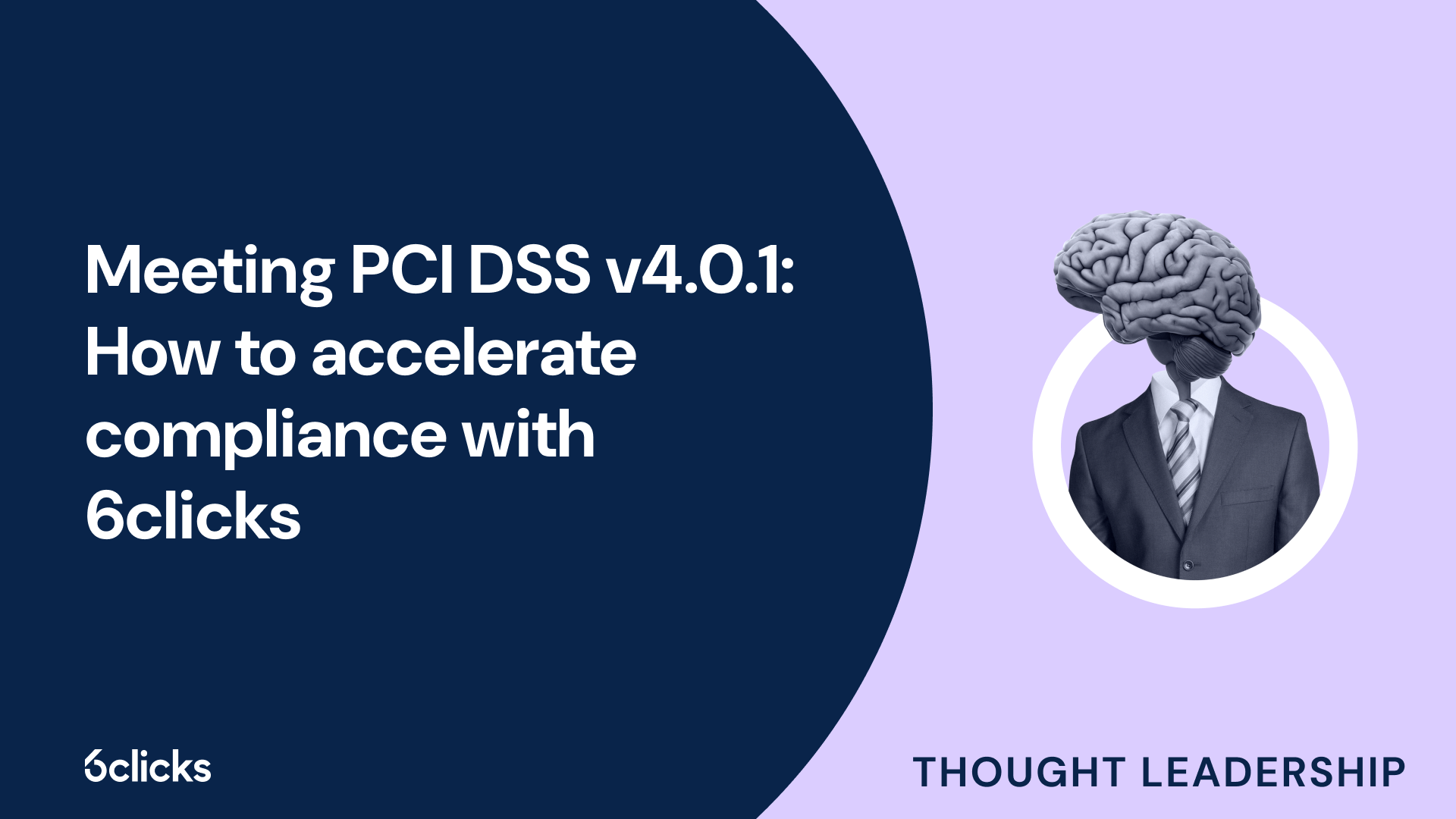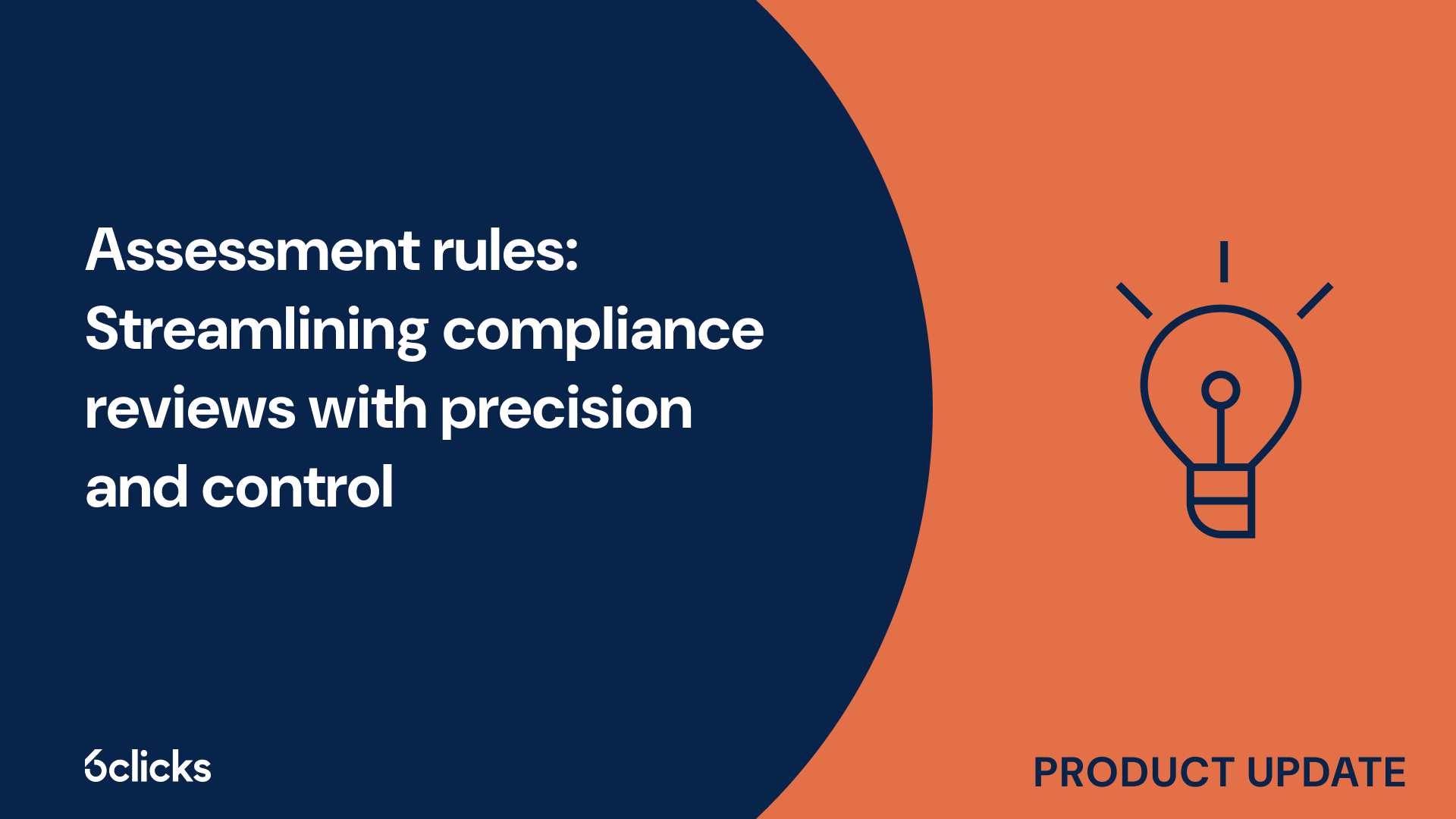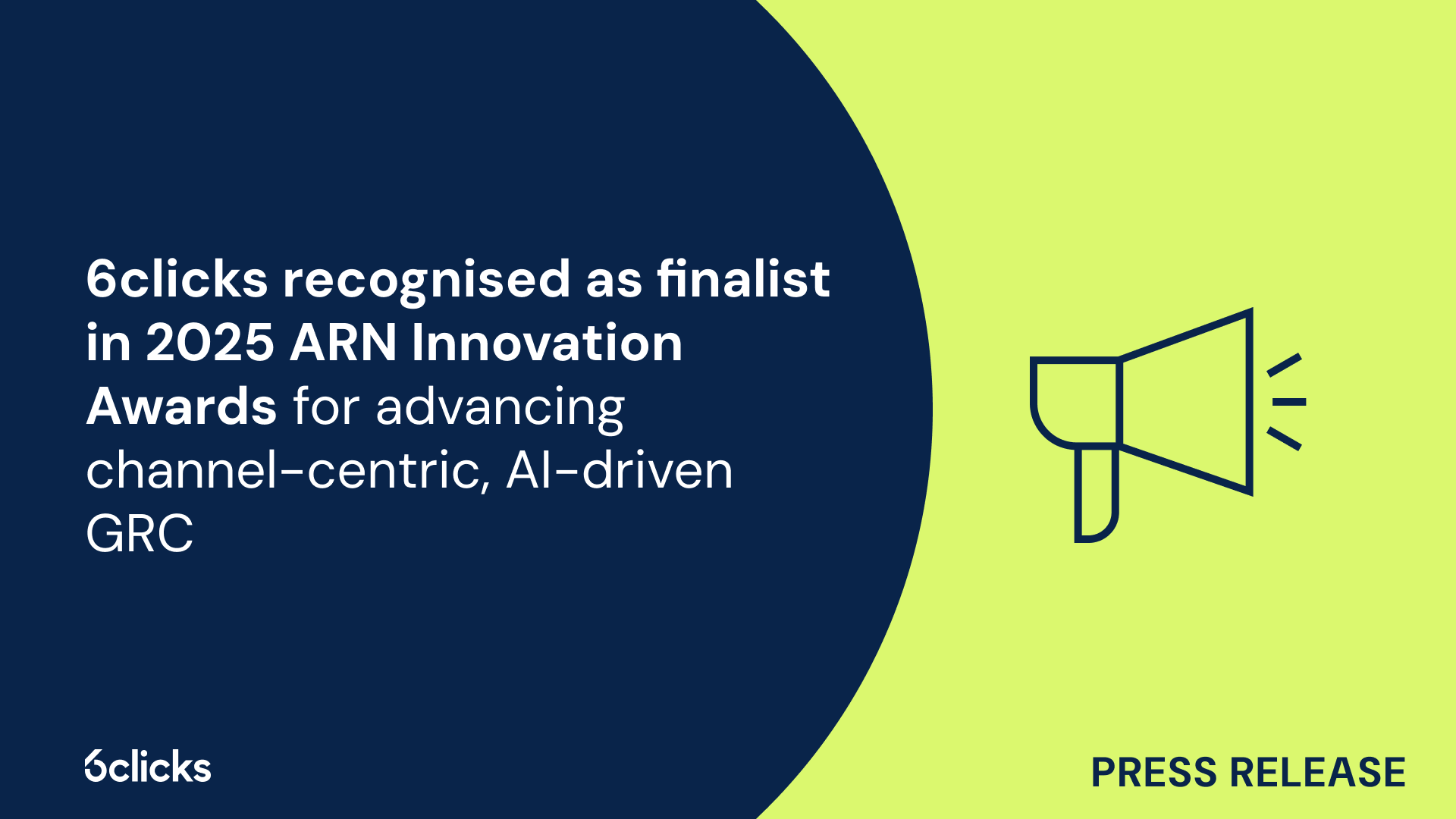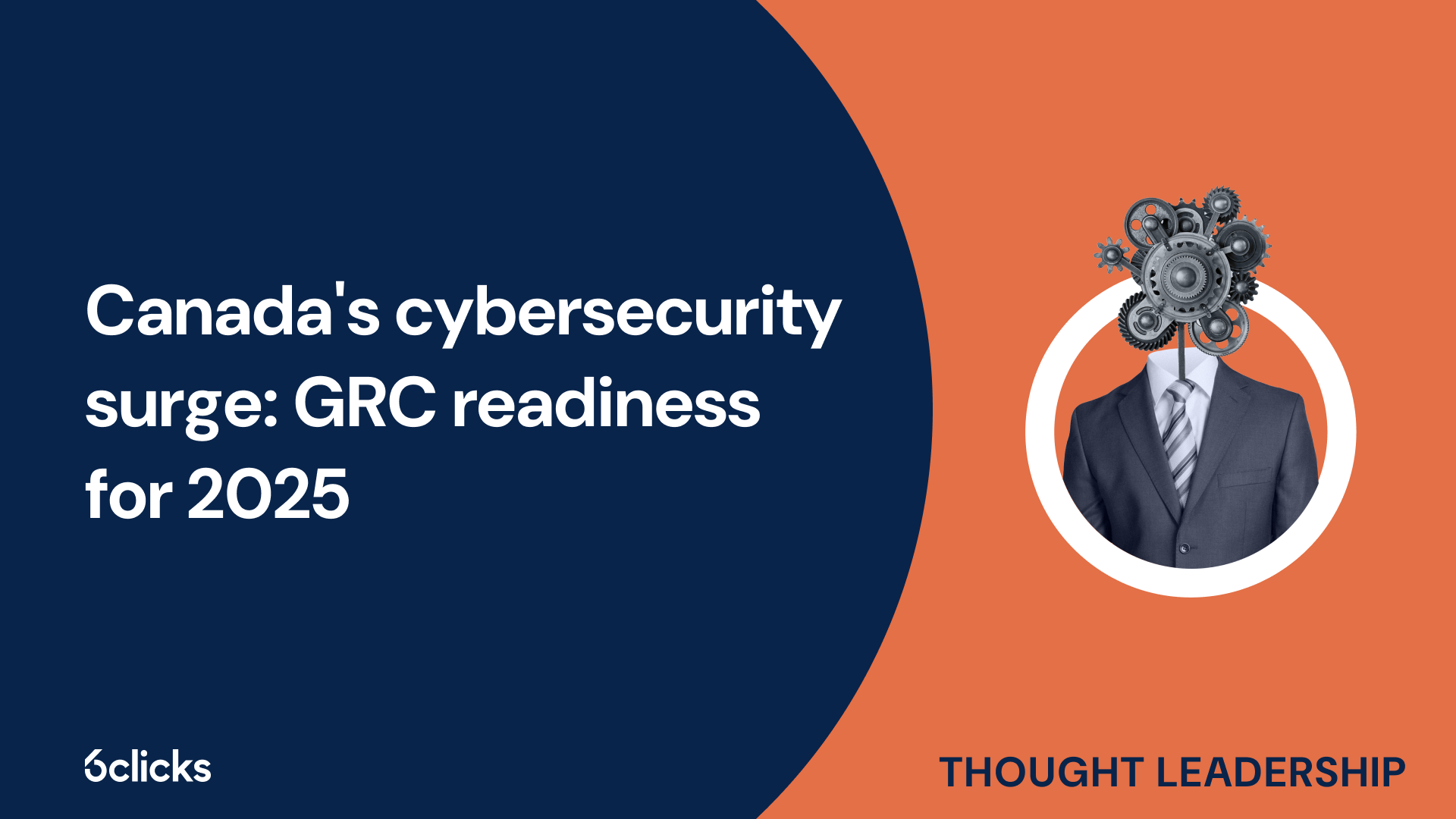Cyber resilience with NIST CSF in 2025
Master cyber resilience in 2025 with this expert guide to the NIST Cybersecurity Framework. Learn how to assess risk, improve security posture, and automate compliance with AI-powered solutions from 6clicks.
-1.png?width=200&height=249&name=Group%20193%20(1)-1.png)
Cyber resilience with NIST CSF in 2025
What is NIST?
The National Institute of Standards and Technology (NIST) is a federal agency within the United States Department of Commerce. NIST's primary mission is to promote and enhance the country's industrial competitiveness by advancing measurement science, standards, and technology in ways that enhance economic security and improve quality of life. NIST has developed a wide range of standards and guidelines, particularly in the field of cybersecurity, to help organizations protect their information and systems from security threats. One of the most well-known frameworks developed by NIST is the NIST Cybersecurity Framework (NIST CSF), which provides a systematic approach to managing and reducing cybersecurity risks. The NIST CSF is widely used by federal agencies, service organizations, and businesses of all sizes to assess and improve their cybersecurity programs. It offers a comprehensive set of security controls and guidelines that address various aspects of cybersecurity, such as risk management, access controls, incident response, and supply chain security. Organizations can use the NIST CSF to establish a culture of security, improve their current security posture, and comply with cybersecurity requirements.
What is SOC 2?
SOC 2, which stands for System and Organization Controls 2, is an auditing standard developed by the American Institute of Certified Public Accountants (AICPA) to assess the information security controls of service organizations. It is used to evaluate and report on the effectiveness of a service organization's internal controls over a period of time.
The purpose of SOC 2 is to provide assurance to service organizations, their clients, and other stakeholders that the organization has implemented appropriate controls to protect the confidentiality, integrity, and availability of their systems and data. It focuses on five Trust Services Criteria (TSC): security, availability, processing integrity, confidentiality, and privacy. These criteria serve as guidelines for evaluating the effectiveness of the organization's controls in each respective area.
To obtain a SOC 2 report, a service organization engages an independent auditor to examine its controls and issues an attestation report. The report provides detailed information about the organization's current security posture, the controls in place, and any deficiencies or weaknesses identified during the assessment.
SOC 2 is a widely recognized and respected standard in the industry, often considered the gold standard for information security assessments. It helps service organizations demonstrate their commitment to security and compliance requirements and gives clients confidence in their ability to protect sensitive data. By following SOC 2 guidelines and obtaining an attestation report, service organizations can build a culture of security and provide assurance to their clients that they are taking cybersecurity seriously.
Difference between NIST and SOC 2
NIST and SOC 2 are two frameworks that organizations can utilize to improve their information security and demonstrate compliance with industry standards. However, there are some key differences between the two.
NIST, which stands for the National Institute of Standards and Technology, is a voluntary framework that provides guidelines and best practices for managing and improving information security. It is widely recognized and used by both public and private sector organizations. NIST focuses on risk management and provides a systematic approach for assessing and mitigating security risks. By implementing NIST's cybersecurity framework, organizations can enhance their security posture and reduce the likelihood and impact of security incidents.
On the other hand, SOC 2 is an audit-based compliance framework specifically designed for service organizations. It aims to provide assurance to clients and stakeholders that the organization has established effective internal controls to safeguard their systems and data. SOC 2 focuses on five Trust Services Criteria: security, availability, processing integrity, confidentiality, and privacy. By engaging an independent auditor, service organizations undergo an assessment of their controls, and an attestation report is issued documenting the findings.
While both NIST and SOC 2 address information security, they differ in their approach and outcomes. NIST is a voluntary framework that organizations can use to improve their security programs, whereas SOC 2 is focused on obtaining independent documentation of compliance through an audit. Additionally, SOC 2 specifically addresses the security controls of service organizations, while NIST provides broader guidance for organizations in various sectors.
NIST overview
NIST (National Institute of Standards and Technology) is a prominent and voluntary framework that offers guidelines and best practices for managing and enhancing information security. It is widely recognized and utilized by both public and private sector organizations. NIST focuses on the crucial aspect of risk management and provides a systematic approach for assessing and mitigating security risks. By implementing NIST's cybersecurity framework, organizations can greatly strengthen their security posture and reduce the probability and impact of security incidents. This framework serves as a gold standard for organizations looking to establish a comprehensive and effective cybersecurity program. NIST's guidance is applicable to various sectors and provides a valuable resource for developing and maintaining a culture of security within organizations.
Definition of NIST
The National Institute of Standards and Technology (NIST) is a federal agency that is responsible for providing guidelines, standards, and recommendations to address information security, cybersecurity, and privacy challenges. NIST’s objective is to promote the development and implementation of robust and effective security measures to protect sensitive information and critical infrastructure.
NIST offers a wide range of resources and tools that organizations can use to enhance their cybersecurity posture. One of the most notable contributions of NIST is the NIST Cybersecurity Framework (CSF), which provides a systematic approach for organizations to assess and manage their cybersecurity risks. The CSF emphasizes the importance of aligning cybersecurity activities with business objectives and encourages a proactive and risk-based approach to security management.
It is important to note that NIST is not equivalent to ISO 27001. While ISO 27001 is an international standard for information security management systems, NIST provides a set of guidelines and best practices to help organizations enhance their security programs and align with industry standards.
Achieving NIST compliance requires organizations to implement security controls and measures that are in line with NIST’s guidelines and standards. By following NIST’s recommendations, organizations can strengthen their overall security posture and better protect their sensitive information from unauthorized access and cyber threats.
History of NIST
The National Institute of Standards and Technology (NIST) is a U.S. government organization that has played a critical role in driving innovation and growth in the science and technology field for over a century. Founded in 1901, NIST has a rich history of developing and promoting standards, measurements, and technologies to enhance economic competitiveness and improve the quality of life for Americans.
Throughout its history, NIST has achieved several milestones and made significant contributions in various areas, including cybersecurity. As the need for secure digital systems grew, NIST took a leading role in establishing cybersecurity frameworks and guidelines. One notable achievement is the creation of the NIST Cybersecurity Framework (CSF), which has become the gold standard for organizations looking to enhance their cybersecurity postures. The CSF provides a flexible and risk-based approach to managing cybersecurity risks and aligns with industry standards and best practices.
NIST continues its mission to drive innovation and growth in the science and technology field. Through its research, standards development, and collaboration with industry, NIST remains at the forefront of cybersecurity advancements, ensuring that organizations have the resources and guidance they need to protect their information and systems in an increasingly digital world.
Security framework of NIST
The security framework of NIST is a comprehensive set of guidelines that draw on existing standards, guidelines, and practices to help organizations reduce cybersecurity risks. The framework is designed to provide a systematic and risk-based approach to managing cybersecurity incidents and promoting effective cybersecurity practices.
At the core of the NIST security framework is the NIST Cybersecurity Framework (CSF). The CSF consists of five core functions: identify, protect, detect, respond, and recover. These functions categorize all cybersecurity projects, processes, capabilities, and daily activities, making it easier for organizations to identify and prioritize their cybersecurity efforts.
The identify function helps organizations understand their current security posture and the risks they face. It involves activities such as asset management, risk assessments, and the development of internal controls. The protect function focuses on implementing safeguards to protect against potential cybersecurity threats. This includes activities like access controls, data encryption, and security awareness training.
The detect function involves ongoing monitoring and identification of cybersecurity events. This includes activities like continuous monitoring, security incident response planning, and vulnerability management. The respond function deals with the management of cybersecurity incidents when they occur. This includes activities like incident response, communication, and recovery planning.
Lastly, the recover function focuses on restoring systems and services to normal operations after a cybersecurity incident. This includes activities like system backups, business continuity planning, and lessons learned.
By following the NIST security framework and implementing the five core functions of the CSF, organizations can enhance their cybersecurity postures and better protect their assets from cyber threats.
Components of the NIST framework
The NIST framework consists of several components that work together to enhance cybersecurity for organizations. At the heart of the framework is the NIST Cybersecurity Framework (CSF), which incorporates five core functions: identify, protect, detect, respond, and recover.
The identify function involves understanding an organization's current security posture and the risks it faces. This includes activities such as asset management, risk assessments, and the development of internal controls. By identifying potential vulnerabilities and threats, organizations can prioritize their cybersecurity efforts.
The protect function focuses on implementing safeguards to mitigate cybersecurity threats. This includes activities like access controls, data encryption, and security awareness training. Protecting critical assets and systems from potential attacks is crucial in maintaining a secure environment.
The detect function involves the ongoing monitoring and identification of cybersecurity events. It includes activities such as continuous monitoring, security incident response planning, and vulnerability management. Detecting threats in a timely manner allows organizations to respond promptly and mitigate potential damages.
The respond function deals with the management of cybersecurity incidents when they occur. This includes activities like incident response, communication, and recovery planning. Swift and effective responses can help minimize the impact of an incident and facilitate the recovery process.
Finally, the recover function focuses on restoring systems and services to normal operations after a cybersecurity incident. It includes activities such as system backups, business continuity planning, and learning from past incidents to improve future responses.
By incorporating these components, organizations can develop a comprehensive and systematic approach to cybersecurity that aligns with the NIST framework's principles.







